Ballan Caring For Our Country EverGraze Supporting Site (Peter and Scott Young)
Changed management of steep gorges
See also the case study;
Fast Facts
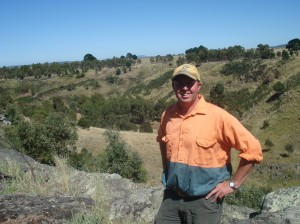
Site Location: Ballan, Victoria
Host producers: Scott and Peter Young
Producer group: Serrated Tussock Action Group
Site Coordinator: Lisa Miller, formerly Agriculture Victoria Geelong
Duration: 2008-2010
Site focus: The aim was to develop a grazing program for steep escarpment country to maximise native grass competition and groundcover, and in doing so, reduce the invasion of serrated tussock.
The Farm
Rainfall: The average rainfall at the Ballan recording station was 468 mm in 2008 and 479 mm in 2009. The long term average since 1889 is 653 mm but the average rainfall over the last ten years has been only 528 mm.
Enterprises: Lamb and wool production and cropping
Farm area: 780 ha
Soils on the farm: The gorges are volcanic in origin. The soil texture is a fine brown clay which is moderately acidic (pH (water) 5.6) and low in soil phosphorous (Olsen Phosphorous 8.7 mg/kg) and sulphur (KCL Sulphur 9.5 mg/kg) but high in potassium (Colwell Potassium 455 mg/kg).
The Site
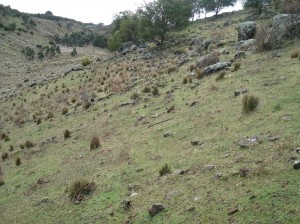
The Supporting Site is representative of the district’s steep gorges that contain native grasslands which are being invaded by serrated tussock. The steepness and rockiness make accessibility and serrated tussock control difficult. Prior to 2003, the gorge was mainly grazed during spring when the crops started to head.
In an effort to control serrated tussock, the Youngs tried to revegetate the gorge with trees and shrubs and between 2003 and 2008, the gorge was not grazed to allow planted trees to establish. Although revegetation successfully established in parts, it did not stop serrated tussock establishing and it continued to grow amongst them.
The area chosen for the site was 28 ha of gorge that was divided into two. In paddock one, native grasses made up approximately 18% of the pasture composition including mainly Wallaby Grass and Spear Grass. Other dominant pasture species included fog grass, sweet vernal, brome and silver grass. This paddock was the treatment paddock and grazing management was applied with the aim of lifting native grass numbers, maximising their competition and increasing groundcover to help weed proof the pasture so that the majority of germinating serrated tussock seedlings fail to establish.
The second paddock, considered the control, had generally less native grasses (main species kangaroo grass), more bare ground, serrated tussock, cocksfoot (self-sown) and broadleaf weeds including capeweed, sow thistles, horehound and erodium. Due to the higher density of serrated tussock this site had been aerially sprayed with flupropanate in 1999 which had also killed spear grass and wallaby grass and left a lot of bare ground. Serrated tussock had re-established itself in this site in such high numbers that it could no longer be controlled with spot spraying and had to be aerially sprayed again in 2008.
Treatments
The treatment paddock was spelled from October until the autumn break. The aim was to maximise groundcover and repel serrated tussock seedlings and increase the density and seeding of native grasses. It was then rotationally grazed throughout winter and early spring, with the aim of maintaining groundcover at 90 to 100% and food on offer (FOO) at 1,500 kg DM/ha.
The control paddock was sprayed with flupropanate in July 2008 due to the density of the serrated tussock and was grazed infrequently due to low groundcover.
Results
Due to the large differences in pasture composition between the 2 sites, they cannot be fairly compared but the change over time within each site provides insights into the success of their management.
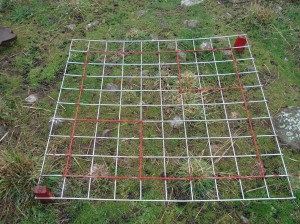 |
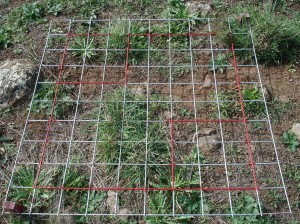 |
| Control plot 2008 (left) and 2010 (right). Cocksfoot with increasing areas of bare ground and broad leaf weeds having been sprayed with Flupropanate | |
Pasture Persistence
The change in native grass persistence over time was measured as percentage of growing point intercepts and percentage frequency of occurrence. A good perennial pasture has percentage growing point intercepts (PGP) of between 5 and 20% and a percentage frequency of occurrence greater than 70%.
In the treatment site, the persistence measurements indicated that the native grass content started at below desirable levels. Over the period of the demonstration, the measurements indicated that native grasses increased both from an increase in plant size and from recruitment of native grass seedlings. (Table 1).
In comparison the control site, the density of these species declined after the plots were sprayed with flupropanate in July 2008.
Table 1. Persistence (%) of perennial species for 2008, 2009 and 2010 in fixed plots.
| Persistence Measurement | Pasture Species | Treatment | Treatment | Treatment | Control | Control | Control |
| 2008 | 2009 | 2010 | 2008 | 2009 | 2010 | ||
| Growing point intercepts % | Native grasses | 3.7 | 4.1 | 5.2 | 1.2 | 0.7 | 0.7 |
| Frequency of occurrence (%) | Native grasses | 18.1 | 24.1 | 31.8 | 5.3 | 3.8 | 3.7 |
| Growing point intercepts % | Cocksfoot | 0.1 | 0.1 | 0 | 1.9 | 1.1 | 0.7 |
| Frequency of occurrence (%) | Cocksfoot | 0.4 | 0.4 | 0.1 | 6.9 | 5.8 | 3.1 |
Groundcover
This trial began with high pasture cover after the gorge had been spelled from grazing for five years to allow tree plantings to establish. Grazing reduced groundcover over winter in the treatment paddock but spelling over spring and autumn allowed it to build back up to 95%. FOO remained below the target of 1500 kg DM/ha throughout (Table 2), reflecting a lack of pasture growth due to low rainfall (442 mm in 2008 and 421 mm in 2009
Spraying with flupropanate in the control, caused ground cover and FOO to drop in the year following its use. An increase in mainly annual broadleaf weeds followed spraying. With low levels of desirable grass species within the control, the pasture is unlikely to prevent serrated tussock re-establishment. Serrated tussock numbers are likely to build up where spraying will be required in another five years.
Table 2. Groundcover and Food On Offer (FOO) kg DM/ha 2008-2010.
| Treatment | Control | |||
| Time of measurement | Groundcover (%) | FOO (DM kg/ha) | Groundcover (%) | FOO (DM kg/ha) |
| Autumn 2/5/08 | 100 | 650 | 99 | 531 |
| Winter 22/8/08 | 88 | 517 | 96 | 519 |
| Autumn 25/3/09 | 95 | 414 | 80 | 381 |
| Winter 30/7/2009 | 92 | 514 | 77 | 403 |
| Autumn 31/3/2010 | 94 | 885 | 80 | 800 |
Stocking History
The paddocks were grazed by merino wethers, pregnant ewes and ewe weaners for short periods (4 to 17 days) from April to early September throughout 2008-2010, when feed on the improved country was in short supply. Table 3 shows the total DSE grazing days for 2008, 2009 and the first half of 2010 and shows that the treatment paddock carried over five times the stocking rate of the control. The average annual stocking rate for 2008 and 2009 was approximately 3 DSE/ha and 0.5 DSE/ha for the control.
Table 3 Total DSE Grazing days per hectare
| Year | Treatment 11.5ha |
Control 16.5ha |
| 2008 | 1333 | 248 |
| 2009 | 1177 | 212 |
| 2010 (Jan – June) | 362 | 72 |
Acknowledgements
Thanks are extended to Peter and Scott Young for hosting the site. This site was supported by Caring for Our Country, Agriculture Victoria and Future Farm Industries CRC through the National EverGraze Project.
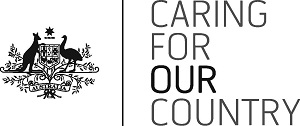 |
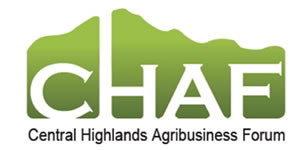 |

